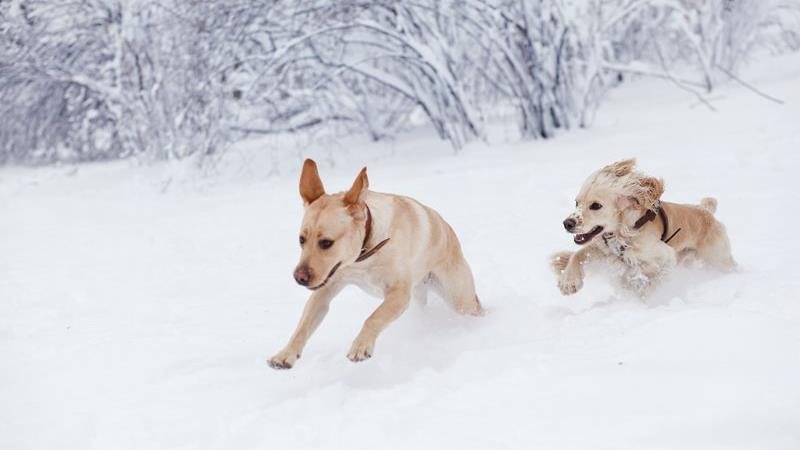
Winter walks can be magical, but when temperatures drop, they can also be risky for your dog. You might bundle up in boots and gloves, but your pup’s paws are exposed to ice, snow and freezing surfaces. So, can dogs get frostbite? Yes. It’s more common than many pet owners realize.
Frostbite happens when skin and tissue freeze due to prolonged exposure to cold. It most often affects extremities like ears, tails and paws. In dogs, paws are especially vulnerable because they come into direct contact with icy ground and snow.
What causes frostbite on dogs’ paws?
Frostbite occurs when blood flow to the skin is reduced in response to cold. The body prioritizes keeping vital organs warm, which means less circulation to the paws. If your dog spends too much time outside in freezing temperatures, especially without protection, frostbite can develop.
Wind chill, wet fur and underlying health conditions can increase the risk. Puppies, senior dogs and breeds with short coats are especially susceptible.
Signs of frostbite on dogs’ paws
Spotting frostbite early is key to preventing serious damage. Here are some common signs of frostbite on dogs’ paws:
-
Pale, grey or bluish skin on the paw pads or toes
-
Cold or brittle skin to the touch
-
Swelling or blisters
-
Pain when walking or reluctance to move
-
Skin that turns red and puffy as it warms up
-
In severe cases, blackened tissue (a sign of necrosis)
If your dog shows any of these symptoms, bring them indoors immediately and contact your vet. You can also learn more about recognizing discomfort in pets in our blog post.
What to do if you suspect frostbite
If you think your dog has frostbite:
-
Move them to a warm space right away
-
Gently warm the affected area using warm (not hot) water or a warm cloth
-
Avoid rubbing or massaging the area, which can cause more damage
-
Call your vet for guidance and treatment
Note: Never use direct heat like heating pads or hair dryers as these can burn the skin.
How to prevent frostbite on dogs’ paws
Prevention is the best protection. Here’s how to keep your dog safe during cold weather:
-
Limit outdoor time during extreme cold
-
Use dog booties to protect paws from ice and salt
-
Dry paws thoroughly after walks
-
Keep fur trimmed around the feet to prevent ice buildup
-
Avoid walking on salted sidewalks, which can irritate and damage paw pads
Winter grooming can also help protect your dog’s skin and coat. Learn more in our blog post!
Can dogs get frostbite indoors?
It’s rare, but possible, especially if a dog is left in an unheated space like a garage or porch. Always ensure your dog has access to a warm, dry area during cold months.
So, are you protected for winter?
Sadly, dogs can get frostbite, and their paws are one of the most vulnerable areas. Knowing the signs of frostbite on dogs’ paws and how to prevent it can help you keep your pup safe and comfortable all winter long. If you suspect frostbite, act quickly and contact your vet.
Petsecure is here to help protect your dog year-round. Our pet insurance plans cover unexpected vet visits, including treatment for cold-related injuries, so you can enjoy winter walks with confidence.
Get your free, personalized quote today! We’ve got your dog covered.
